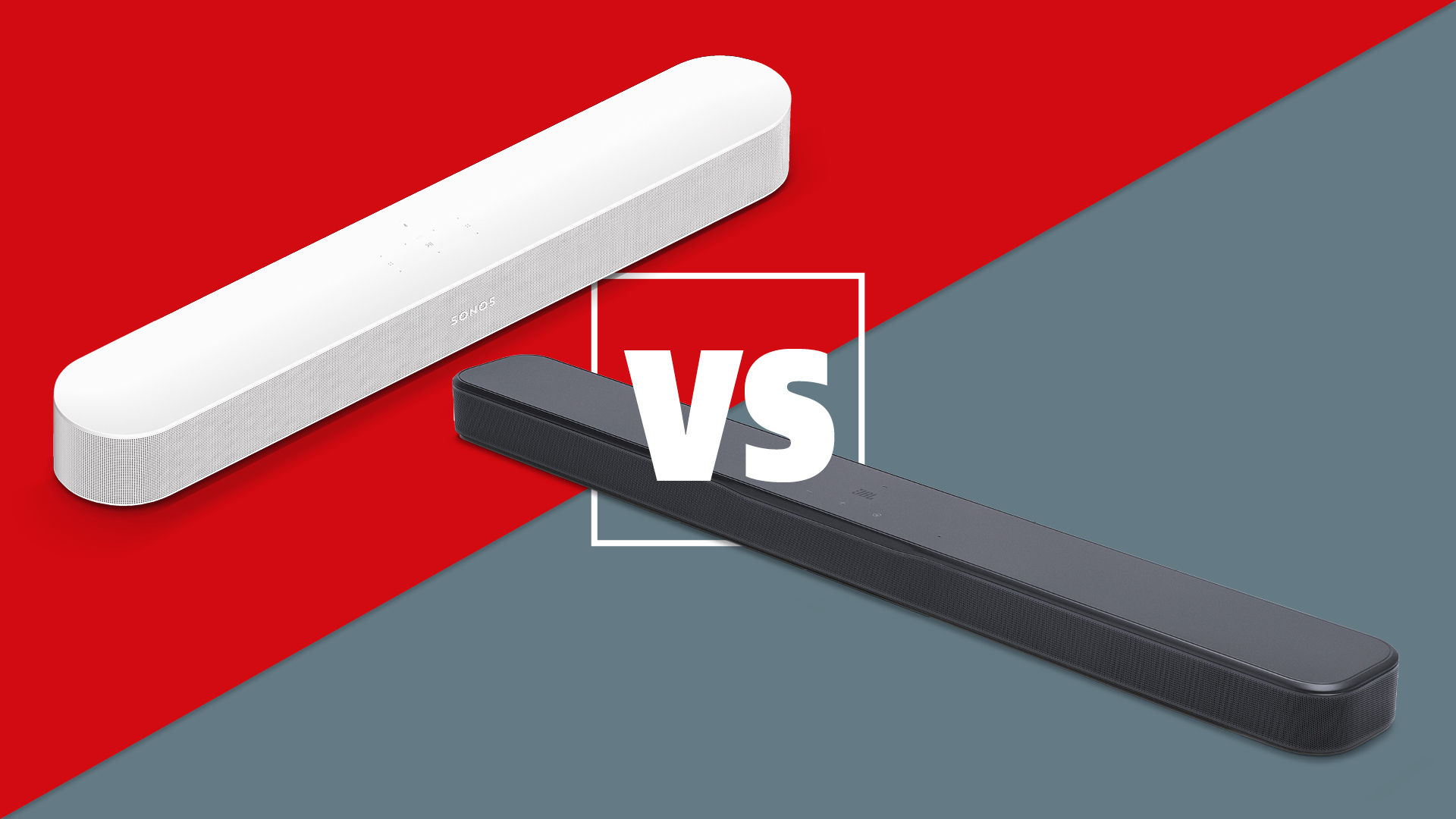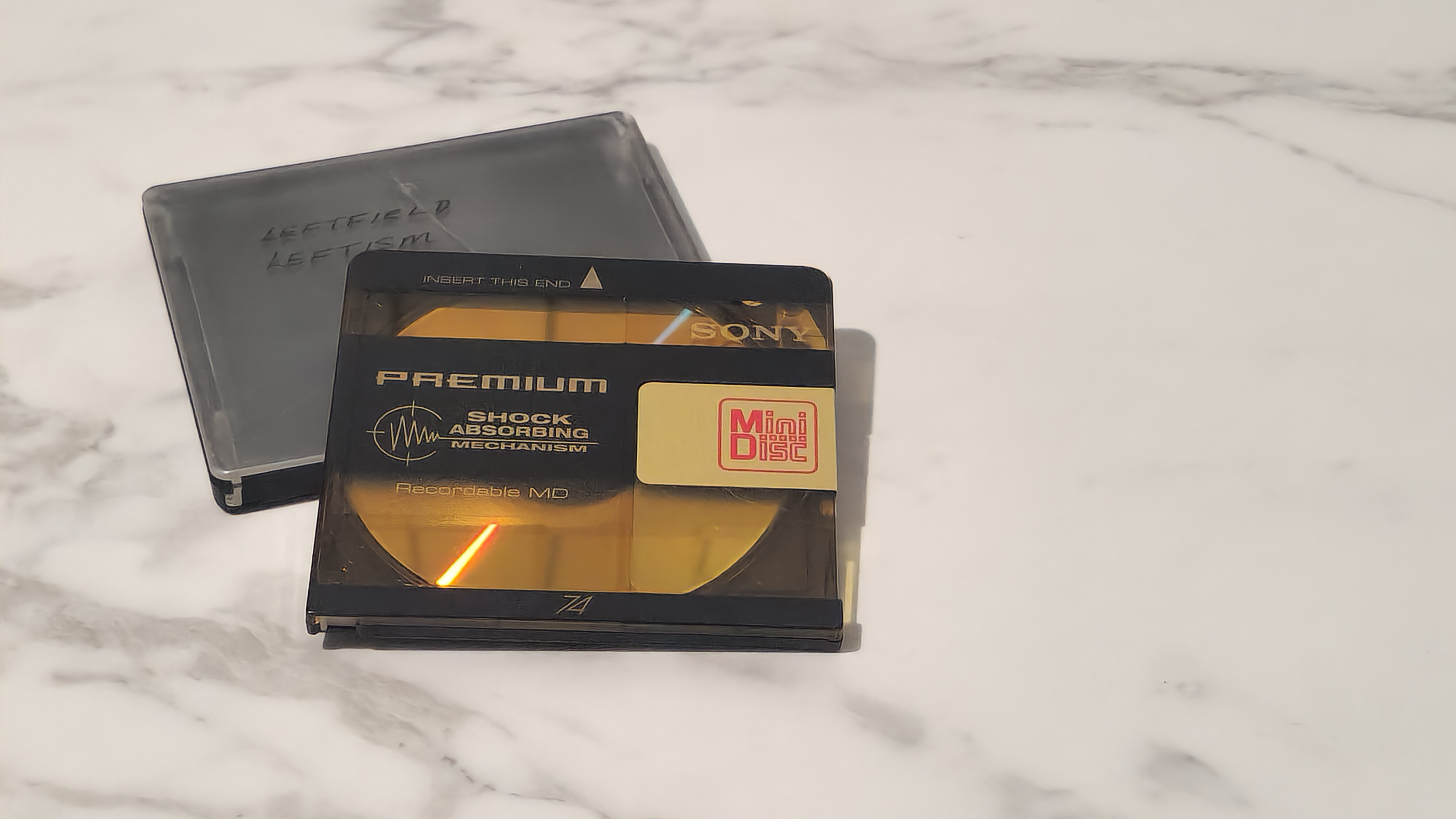
Step away from your favourite streaming service, push the cumbersome and costly vinyl revival to one side, and forget your feelings for the comeback of CDs (and cassette tapes?) for one moment, because the best music format ever conceived, in my opinion, is the MiniDisc.
Back in 1992 – shoehorned in a timeline between CDs overtaking vinyl sales and the introduction of MP3 – Sony perfected portable audio two whole decades before digital downloads and streaming dominated the market.
The MiniDisc – or 'MD' for short – was a bold leap: a 64mm magneto-optical disc encased in a protective caddy. Capable of holding up to 80 minutes of CD-rivalling sound in something smaller than a square stack of sticky notes, I was smitten.
Emanating from Japan, the Sony MiniDisc used ATRAC (Adaptive Transform Acoustic Coding), a compression algorithm that shaved data to fit digital audio into a compact form without sacrificing too much fidelity.
To my young ears, it was magic – digital clarity without the bulk of CDs, plus the ability to record, edit, and rearrange tracks like a cassette, but with precision and speed.
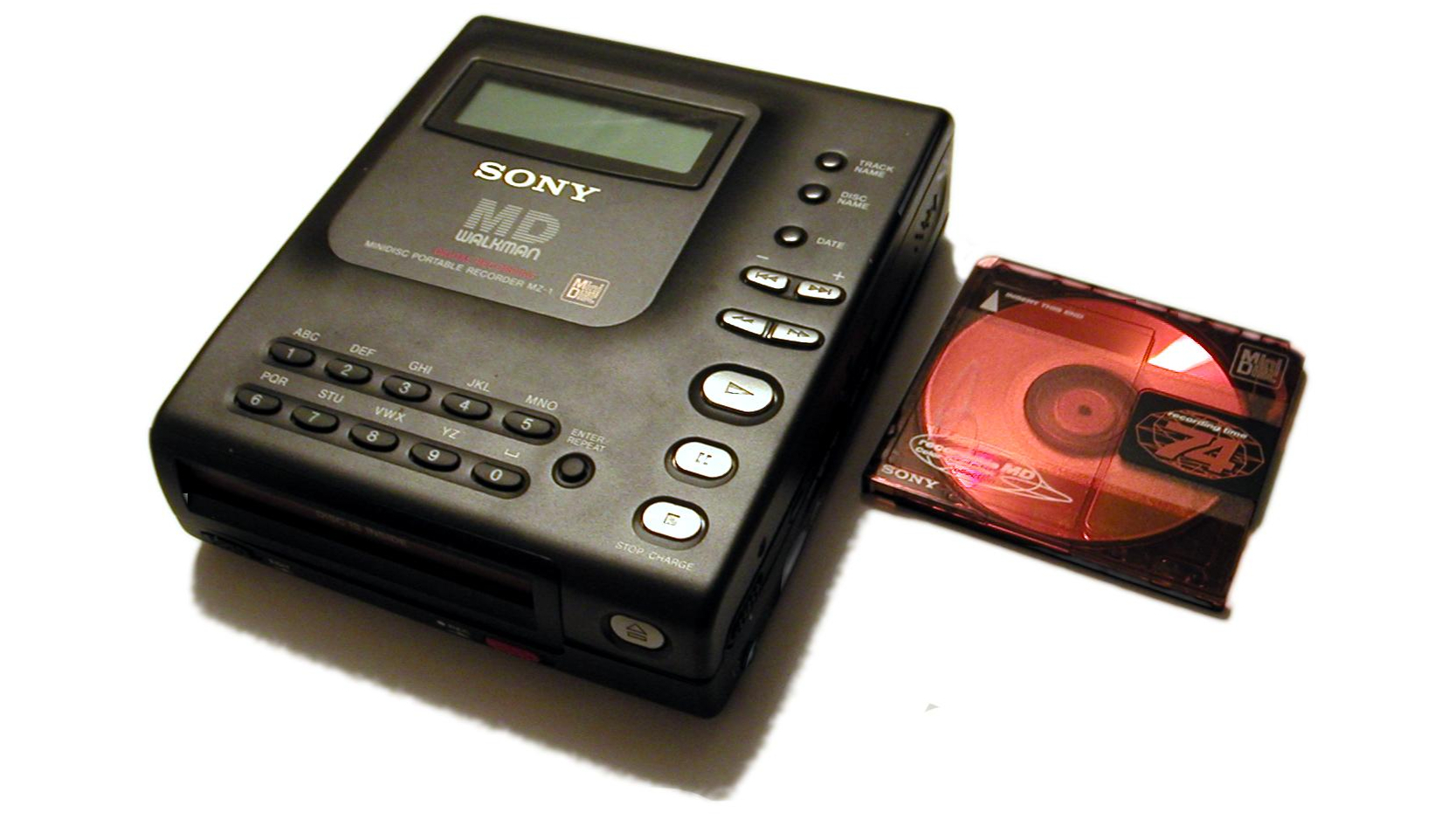
Indeed, you could make digital mixtapes, and boy, was it liberating – manually entering playlist names and track titles with a jog dial so they would appear on an LCD display during playback.
You haven’t lived until you’ve found a live recording of a Reading Irish Centre drum and bass rave on LimeWire and ripped it to one of Sony’s sexy little musical Post-it notes... believe me.
The latest hi-fi, home cinema and tech news, reviews, buying advice and deals, direct to your inbox.
It wasn’t all DIY, and it wasn’t all Sony. Just as rival brands produced blank cassette tapes and CDs, the likes of TDK, JVC, Sharp and Maxell soon got in on the act. Pre-recorded MiniDisc albums were released by the world’s biggest artists, including Michael Jackson, Madonna, Mariah Carey, Massive Attack, and other acts that didn’t start with ‘M’.
A MiniDisc’s tiny footprint also made it a retailer’s and record store owner’s dream. Why pay for all that prime commercial real estate to house a considerable record collection when a tobacco booth would be enough to stock pretty much every major release going, along with the odd under-the-counter bootleg?

The real fun, though, was the kit. Not only was there an exciting new hi-fi separate to add to your stack, but the personal players came in all shapes, sizes and colours, allowing you to express individuality with something that would fit in your back pocket. Car stereo head units? You bet, and you could be brand agnostic, too.
I remember religiously saving my Saturday job money and persuading my dad to take out a hire purchase agreement at Reading's B&B Hi-Fi for the most beautiful royal blue Sony MZ-R50 you’ve ever seen.
Sitting behind glass at the main counter, it was a moment akin to the 1994 Fender Stratocaster scene in Wayne’s World 2, just with less hair. Thanks, Dad.
A couple of years later, my sister, living in Tokyo at the time, picked up a stunning silver Panasonic SJ-MJ75 complete with Japanese packaging (which instantly makes anything cooler). Not only was it half the size of the Sony, barely bigger than a MiniDisc itself, but even in today’s money, I can’t get over how featherweight this thing was.
At 86g, we’re talking half the weight of an iPhone 15, thanks to the magnesium body. Its showpiece was an in-line remote control which you could toggle between backlit and transparent. In 1997, this felt like witchcraft. Cheers, Sis.
It’s no surprise that from there, my MiniDisc world quickly grew. I bankrupted myself for a second time in my teens, adding a Technics SJ-HD501 deck to my Technics SC-81 Mini System, complete with faux wood veneer sides for that extra touch of class.
My Vauxhall Nova was treated first to an Alpine MDA-7763J bought second-hand from a rather rugged-looking chap on a notorious Basingstoke housing estate. It broke soon after. I didn’t go back.
I then bankrupted myself for a third time, switching it for a brand spanking new Pioneer MEH-9100R (see above video), complete with organic OEL display, auto flap front panel, and moving racing car graphics for cool people only.
A MiniDisc hoarder’s best friend was a digital optical cable (TOSLINK). Crucial because it enabled high-quality, lossless digital audio transfer between devices, like from a PC’s sound card to a MiniDisc recorder.
This preserved the original sound quality without degradation, unlike analogue connections, which could introduce noise or signal loss. It was especially important for home decks and professional recorders to ensure accurate recordings and playback, leveraging MiniDisc’s digital format.
MiniDisc’s brilliance lay in its versatility and charm. Unlike CDs, which skipped at the slightest jolt, MiniDiscs were robust, with anti-shock buffers that made them perfect for on-the-go listening. The discs were rewritable, letting me record over old mixes without the permanence of CD-Rs or the hiss of cassettes.
The discs, with their colourful cases and mechanical shutters, felt like miniature treasures, and the format fostered creativity, too. Recording live gigs or radio broadcasts was a breeze, and editing tracks on the fly felt like wielding a studio console. Japanese journalists continued to swear by the format as solid-state recorders until the 2010s.
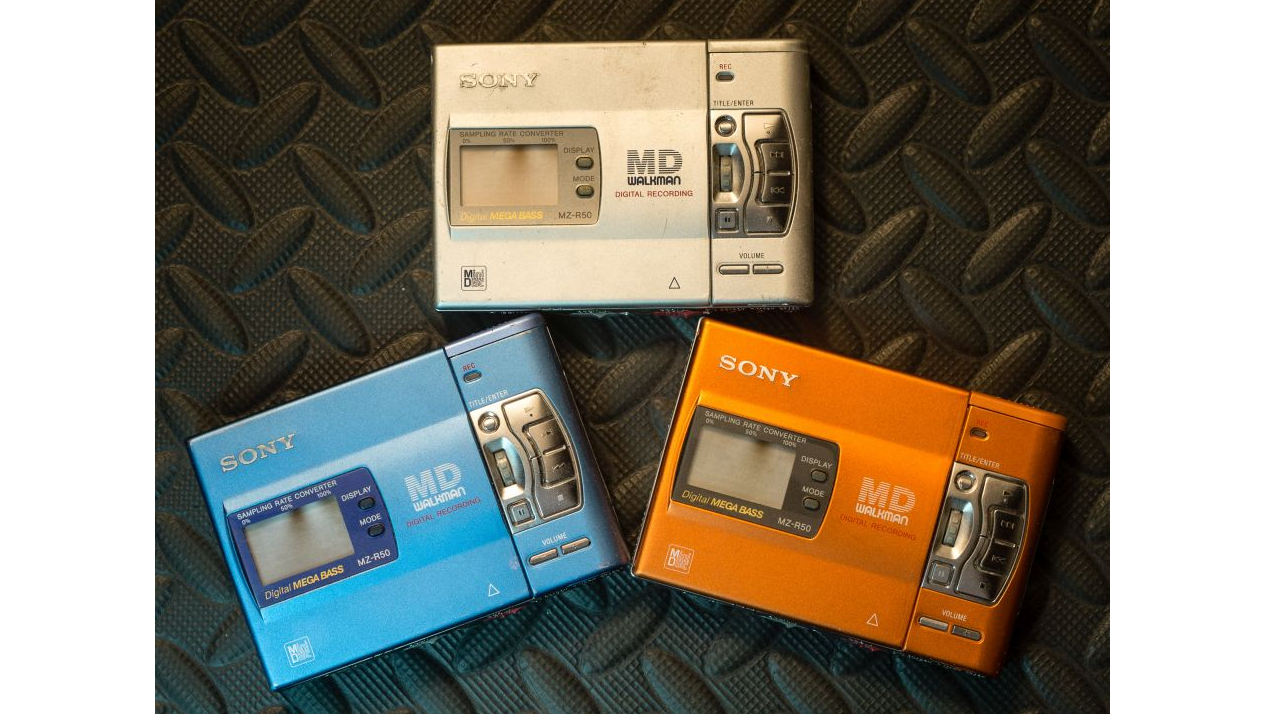
Yet, for all its brilliance, the MiniDisc stumbled. Its decline began almost as soon as it arrived, rooted in timing, cost, and competition. In 1992, the MiniDisc was expensive — players cost hundreds, and blank discs were £5–10 each, a tough sell when CDs were cheaper and cassettes dirt-cheap.
The real blow came in 1998 with the MP3 revolution. The Diamond Rio PMP300, one of the first portable MP3 players, hit the market, and by 2001, Apple’s iPod redefined portable audio.
MP3s were free (if you pirated them), infinitely shareable, and didn’t require physical media. I resisted at first. MP3 players looked hideous, and iPods were heavy, plus the decision fatigue of 1,000 songs in my pocket only served to reduce satisfaction.
While Sony and Sharp pushed MiniDisc hard in Japan (where it thrived into the 2000s), Western support waned, and UK retailers like HMV prioritised MP3 players. Hi-MD’s 2004 launch was a valiant effort, but it was too late – hard drives and flash memory were cheaper and more convenient.
By 2011, Sony ceased MiniDisc player production, and in 2013, the last blank discs rolled off the production line.
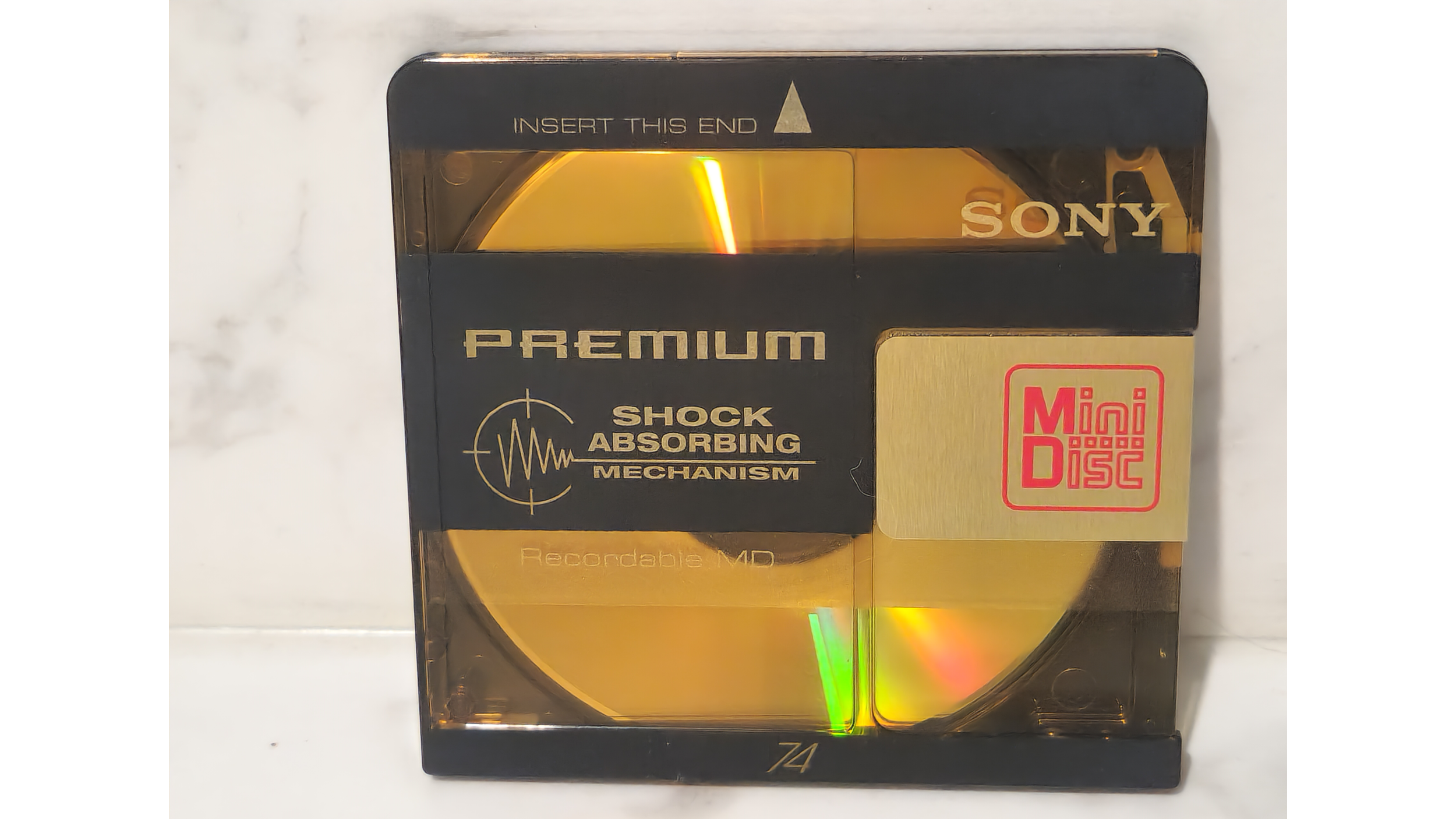
Collectors still trade discs on eBay, and Japan’s niche market keeps the format alive. Independent labels and artists continue producing limited-run MiniDiscs for collectors, often announced on Bandcamp or during MiniDisc Day events, but in truth, a revival on the scale of CDs, cassette tapes, and vinyl isn’t on the cards.
MiniDisc’s failure wasn’t about quality – it was about ecosystem and timing. Sony’s obsession with proprietary tech alienated users, and the format couldn’t compete with the convenience of file-based audio.
Despite its demise, the MiniDisc left an indelible mark. It bridged analogue and digital, teaching us that audio could be portable, editable, and high-quality. It paved the way for modern streaming and playlist culture – every Spotify mix owes a debt to the MiniDisc’s track-editing wizardry.
Having been there, done that, and bought the T-shirt (yes, I own one), my life was richer for the experience.
MORE:
When MiniDisc took on the mighty cassette: What Hi-Fi? magazine, January 1993
James Day is a freelance writer, editor, and DJ. As the former Metro tech editor, Stuff editor-in-chief, and associate producer on The Gadget Show, he has covered consumer electronics for over 25 years.
These days, you’ll find him editing luxury lifestyle magazine Cloud, curating tech content for the Goodwood Future Lab, and contributing articles to everyone from Enki and Trusted Reviews to What Hi-Fi? and WIRED… all while lamenting the untimely death of the MiniDisc.
You must confirm your public display name before commenting
Please logout and then login again, you will then be prompted to enter your display name.

